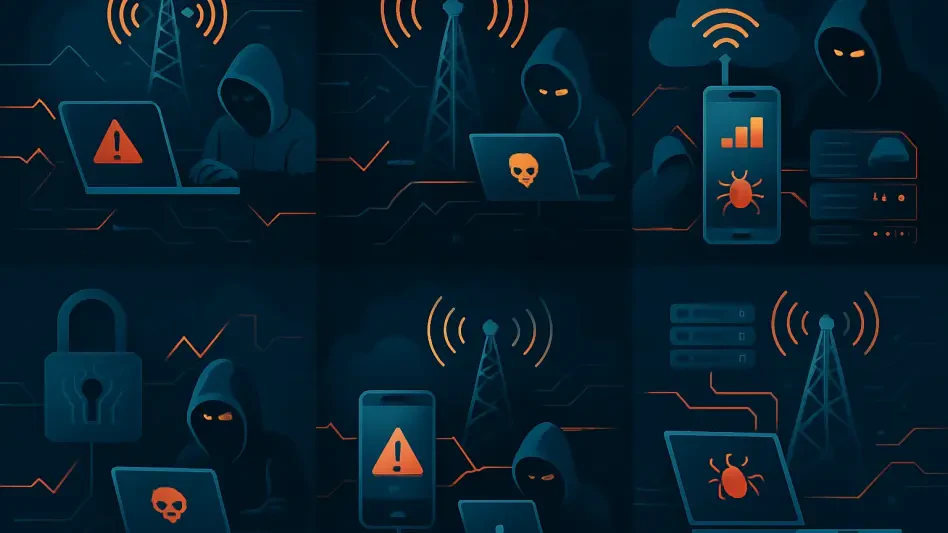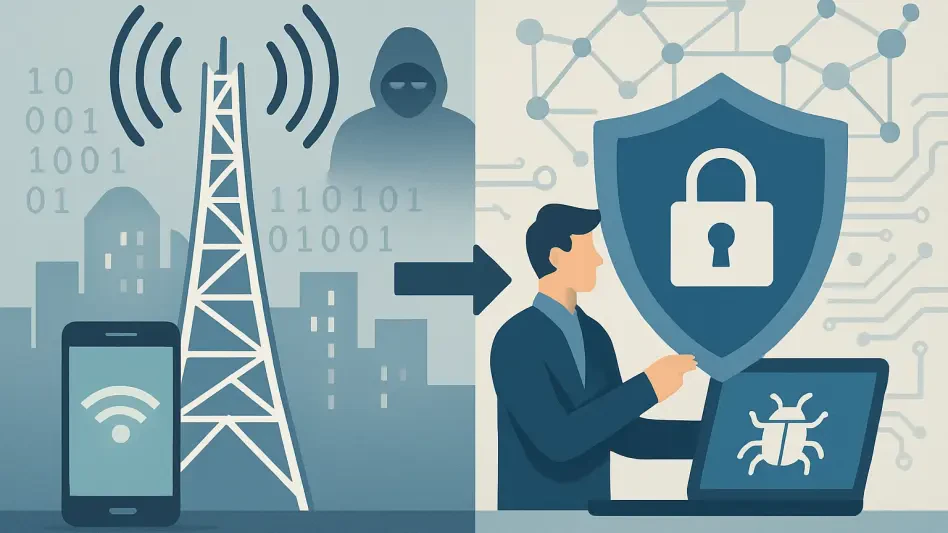In an era where digital connectivity underpins nearly every aspect of daily life, telecommunications companies stand as the backbone of global communication networks, handling vast amounts of sensitive data and serving as critical links in the digital ecosystem. However, this essential role also makes them prime targets for cybercriminals who increasingly exploit the treasure troves of personal and operational information these organizations possess. The telecom sector has become a focal point for sophisticated cyberattacks, with breaches exposing millions of customers to risks and shaking trust in these vital services. From malware lingering undetected for years to ransomware infiltrating internal systems, the variety and complexity of threats continue to grow. This alarming trend raises pressing questions about the vulnerabilities within telecom infrastructure and the urgent need for robust defenses. As the industry evolves, understanding why telecoms are such attractive targets for hackers is crucial to safeguarding the digital landscape that so many depend on every day.
The Allure of Vast Data Repositories
Telecommunications firms manage an unparalleled volume of sensitive data, making them irresistible to cybercriminals seeking valuable information for illicit gain. Customer records, including phone numbers, subscriber IDs, and personal details, are just the tip of the iceberg. Beyond individual data, telecoms hold critical operational details such as network designs and financial records, which can be exploited for espionage or sold on the black market. A breach at a major South Korean operator earlier this year revealed how malware accessed data across thousands of servers, exposing the sheer scale of information at risk. Hackers target these repositories not only for direct financial profit through identity theft or fraud but also to disrupt services or gain leverage over corporations and governments. The high stakes of such data make telecoms a prime focus for attacks, as a single successful breach can yield a massive payoff for perpetrators, often at the expense of millions of unsuspecting individuals.
Moreover, the interconnected nature of telecom networks amplifies their appeal to malicious actors looking to maximize impact. These companies serve as gateways to broader digital ecosystems, linking individuals, businesses, and even critical infrastructure. A breach in one system can ripple across multiple sectors, causing widespread disruption far beyond the initial target. For instance, an attack on a French telecom giant compromised millions of customer subscriptions, demonstrating how a single incident can affect a vast user base. Cybercriminals recognize that infiltrating a telecom provider offers a stepping stone to other networks, potentially unlocking access to sensitive governmental or corporate systems. This strategic position within the digital landscape elevates the sector’s vulnerability, as attackers exploit these connections to orchestrate larger, more devastating campaigns. The potential for cascading effects underscores why telecoms remain at the forefront of cyber threats, demanding constant vigilance and innovative security measures.
Sophistication and Persistence of Cyber Threats
The evolving sophistication of cyberattacks poses a formidable challenge for telecom companies struggling to keep pace with increasingly advanced threats. Hackers now employ a range of tactics, from long-dormant malware to ransomware that targets non-critical systems with devastating results. A notable incident at a global technology services provider revealed the theft of a million documents, including employee salaries and customer contracts, highlighting the depth of access attackers can achieve. Such breaches often go undetected for extended periods, allowing cybercriminals to extract vast amounts of data before their presence is noticed. The use of cutting-edge tools, sometimes powered by artificial intelligence, enables attackers to bypass traditional security measures with alarming ease. As threats become more complex, telecoms face the daunting task of identifying vulnerabilities in real time while contending with the persistent nature of modern cyber warfare.
Equally concerning is the frequency with which these sophisticated attacks occur, often targeting multiple facets of a telecom’s operations. A French operator experienced multiple breaches in a short span, with one incident involving a ransomware group extracting sensitive files from a regional application. These repeated assaults demonstrate that cybercriminals are not deterred by initial failures; instead, they adapt and strike again, exploiting any weakness they can find. The persistence of these threats is compounded by the delayed detection that many companies face, as outdated systems or insufficient monitoring fail to catch intrusions early. Reports indicate a significant uptick in business cyberattacks, with some estimates suggesting a double-digit percentage increase over recent years. This relentless pressure on telecoms to defend against ever-evolving threats emphasizes the need for dynamic, proactive security strategies that can anticipate and neutralize dangers before they escalate into full-blown crises.
Consequences and the Path to Resilience
The fallout from cyberattacks on telecoms extends far beyond immediate data loss, striking at the heart of customer trust and corporate reputation. When millions of subscribers’ personal information is compromised, as seen in a major breach at a European provider, the damage to public confidence can be profound and long-lasting. Affected companies often face intense scrutiny from regulators and governments, with investigations launched to assess delayed reporting or inadequate responses. The financial cost of these incidents is staggering, encompassing not only direct losses from stolen data but also the expenses of legal battles, fines, and system overhauls. More critically, the erosion of trust can drive customers to competitors, creating a ripple effect on market share and long-term viability. The stakes are incredibly high, as telecoms must balance the immediate need to contain breaches with the broader imperative of maintaining public faith in their services.
Looking back, the series of breaches that struck prominent telecom operators reflected a sobering reality for the industry. These incidents served as wake-up calls, exposing systemic vulnerabilities that demanded urgent attention. Moving forward, the path to resilience lies in adopting comprehensive cybersecurity frameworks tailored to the unique risks telecoms face. Real-time threat detection, regular audits, and rapid response protocols emerged as essential components of a robust defense strategy. Transparent communication with customers also proved vital, as seen in cases where timely notifications helped mitigate reputational harm. As the digital landscape continues to expand, telecoms must invest in cutting-edge technologies and collaborate with industry peers to stay ahead of cybercriminals. By prioritizing proactive measures and fostering a culture of security, the sector can build stronger defenses, ensuring that the critical networks connecting the world remain secure against the relentless tide of cyber threats.








